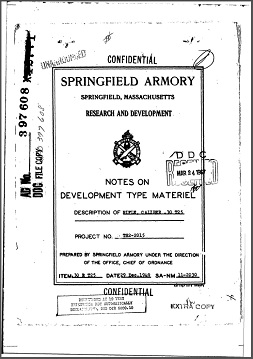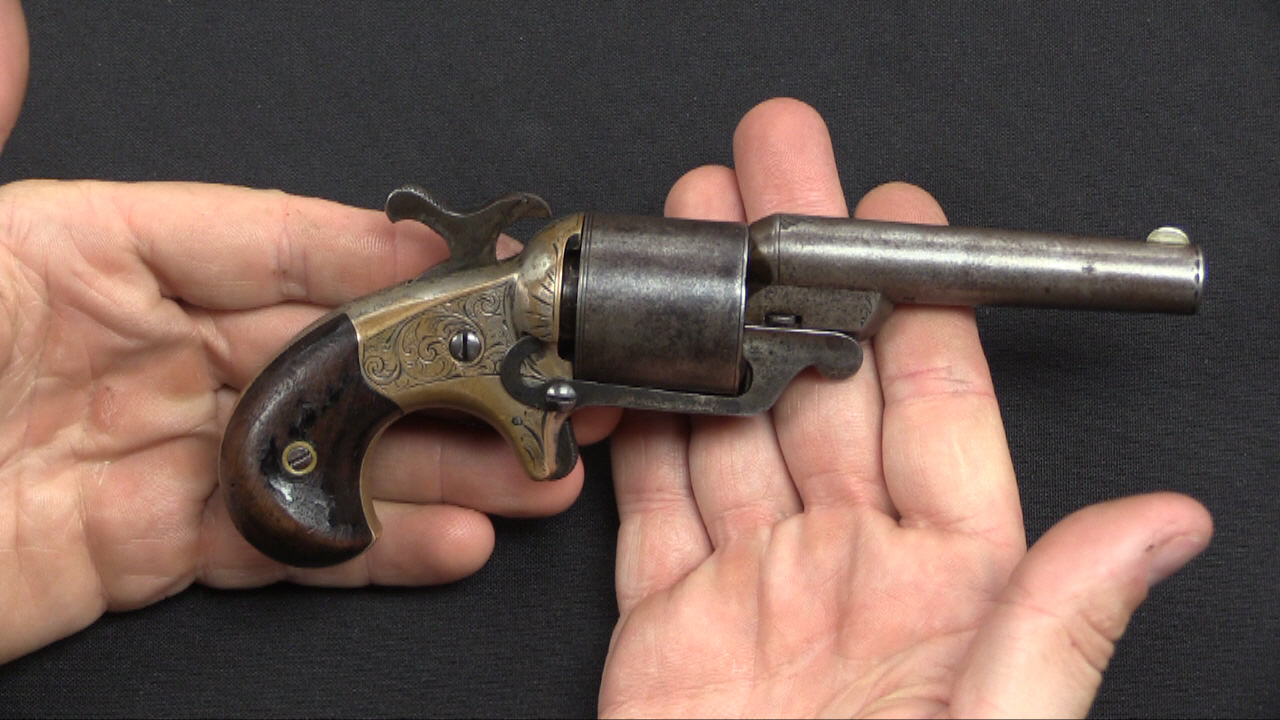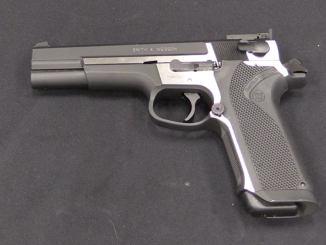I recently got my grubby hands on a big pile of gun-related documentation (thanks, Mike!), and one of the items that jumped out at me while looking through it was a 1949 report on the T25 rifle, printed by the Springfield Armory R&D department.
To recap briefly, by the end of WWII the military had decided that the M1 Garand needed to be updated, and they had John Garand working hard on a version (designated the T20) that used 20-round box magazines and was capable of full-auto fire. The urgency of that project evaporated with Japan’s surrender in 1945, and before long the concept of a new light rifle with a shorter cartridge (the T65, which would eventually be formalized at the 7.62mm NATO) took hold. US Ordnance put an engineer named Earle Harvey in charge of studying all the available small arms technology and developing an ideal “light rifle” for use with this new cartridge.
Harvey’s creation was the T25, and it really was a pretty good rifle. It used a modified version of the M1’s gas system (the same basic system would eventually be used on the M14) and a tilting bolt reminiscent of the Bren. With careful lightening and judicious use of some aluminum parts, it came in at a mere 7lbs, too. It performed well in early tests, and 50 were ordered for more extensive testing. Twelve of the T25 rifles were delivered in January of 1949 (having been built by Remington), and by the end of that year Springfield had also printed this manual on the weapon:

In addition to providing instructions for complete detail stripping of the rifle, the manual revealed a couple details I had not been aware of regarding the operation of the T25. For one thing, it was set up to fire from a closed bolt in semiauto and from an open bolt in full auto. That’s a good idea, given the necessarily light barrel and the operation plan to use the gun as a replacement for both the M1 and BAR. What is a bit more surprising is that the bolt release was integrated into the trigger, like some much earlier designs (you can see this mechanism in action in my videos on the ZH-29 and Farquhar-Hill).
Bascially, the manual of arms for a system like this is (starting with the bolt locked open on an empty mag): remove the empty mag and replace it with a loaded one (the bolt stay open when the mag is removed). Confirm that the selection is on semi, and pull the trigger once. This releases the bolt, which chambers the first round from the new mag but does not fire. Then pull the trigger a second time to fire, at which point the rifle operates just like you would expect, loading a new round and waiting, closed, for the next trigger pull. If the selector is set to full auto, things work a bit differently. In full auto, the rifle fires from the open position, so the first trigger pull when locked open and a full mag inserted will fire, and continue to fire until the trigger is released – at which point the bolt will catch in the open position and wait for another trigger pull.
This type of mechanism seems pretty crazy today, with all of our training to keep away from the trigger until actually ready to fire. From a military perspective, though, it’s not necessarily a bad idea. By using the trigger, the design allows the bolt release control to be removed entirely, which certainly simplifies the controls. If a soldier in combat shoots his rifle dry and has to reload, he will naturally be going back to the trigger, so using it as the bolt release is easy to train. The bolt can still be alternatively closed by removing the magazine entirely (thus disengaging the holdopen mechanism) and racking the charging handle. The trigger release idea certainly doesn’t fit with modern range safety practices, but in its 1940s military context I think it was arguably a pretty good decision. It simplifies handling and training and removes a lever on the outside of the gun all without making the system more complex.




I’ve seen dumb ideas, but to require a trigger pull on a live cartridge to switch from FA to SA ranks near the top of the list.
It does sound like it’s tempting fate, I wonder whether courts martial would have accepted the trigger bolt release as a valid excuse for the shooting of officers in the back?
and if a court martial ever did accept it, how many repeats of the “accident” would have occured in the weeks and months following that judgement?
Similar is happening when loading Browning machine-gun, am I right? Charge once, pull trigger than pull charging handle second time and ready to fire.
No. Just rack the handle twice after placing the belt.
@Mu
Hmm, did I get something wrong? From what I have comprehended, you don’t use that trigger to switch from SA to FA, just to release the bolt from the autosear which doubles as a hold-open in BOTH modes. And only SHOULD the selector be left in FA, the gun then would fire, because it fires FA from an open bolt, anyway. But the selector is not linked to a trigger in any way, it is a separate part. Where have you got the notion of having to pull the trigger to switch firing mode? On the other hand, English is a foreign language for me, and might just mistook it somehow…
Probably it disengages temporary sear (“disconnect” known in other languages as “interrupter”). Once that happens, there is nothing to hold hammer back. This is what I gather, but it is only my (hopefully logical) deduction. Pictures in sample document are not clear enough, to me anyway.
Well, English is my third language too, so the possibility of misunderstandings is always there. To me it sounds like the FA trigger is also the bolt release for the SA function. Normally you’d expect the selector switch or a bolt release mechanism (button or pulling the handle back a bit) to affect the switch from open to closed bolt firing, leaving the weapon in a clear state of readiness. The way this gun is set up, depending on the selector switch setting, you might mistakenly shoot a burst of FA when trying to release the bolt, or, equally dangerous, think you’re in FA mode to shoot at an enemy, and all your get on a trigger pull is a bolt release.
Very interesting and informative article! Thanks!
It would seem that early postwar designers in Switzerland, the United States, and perhaps elsewhere were strongly influenced by the idea of the German Luftwaffe’s Fallschirmjägergewehr, no? A semi-auto rifle that could also be used as an automatic rifle and/or squad support weapon all-in-one.
If the range safety is such that the trigger finger never enters the trigger guard until the sights are on target downrange, I don’t think the trigger pull to a) fire from the open bolt on full automatic or b) close the bolt, then follow up with another trigger squeeze to fire full auto is that bad an idea. Trigger discipline would have to be adhered to, religiously, certainly, but then it should be, no?
Ian: Do you see any evidence that the T-25 was the start of the M14 idea insofar as it could be made fully automatic, but that this was for the NCOs/officers to determine not the soldier it was issued to? Just curious…
I can see your point about muzzle discipline, but:
A) Any troops who can’t be trusted to find a bolt-release catch, probably can’t be trusted to religiously observe the 4 Rules either.
B) Any NDs are going to be an unexpected burst of 7.62 NATO on full-auto, which can go from “safe direction” to “lifetime of regrets” before you even realise something’s wrong.
C) Even if the inevitable NDs always occur in a safe direction, you can pretty much forget about trying to keep your position a secret from the enemy.
So no, I don’t see anything good about this feature at all.
First: Thank you for more information on this very intriguing rifle! It’s fascinating me, and I would like to see a semi auto version of it available today.
David Carlson: Not quite, John Garand had already developed the T20 rifle, which was a select fire M1 with a detachable 20 round box magazine. Combine that rifle with the gas system from the T25 here and chambered for 7.62 and you arrive at the M14.
What’s interesting me is the claim that the T25 was designed for distributed low tech manufacture. The idea that the majority of the arm could be produced in local machine shops. Presumably the barrel would be the most difficult and technically demanding component.
More I read about this design, the more I like it. The straight stock, pistol grip and thoughtful mechanism are all pluses. Now, just wondering and considering light weight in contrast to fairly potent cartridge; was there a method of recoil force attenuation? Perhaps in form of spring loaded butt-pad such as FG-42 is done?
One observation on side: you can see how every new technical Army related information at that time was labeled “Confidential” and this makes in a way sense. We had “cold war”, right?!
In contrary, novadays we have tons of information on new designs ‘fresh out-of-oven’. So, what makes all that difference? My take is a rapid commercialization of military industries which has taken place since. It is not one single (state owned) source but multiple, more-less open market ones.
In Rayle’s book, ( https://www.forgottenweapons.com/book-review-random-shots/ ) he describes being told that the only information going to FN about the FAL’s performance in trials (against the T20 and T25 was to consist only of what was going wrong with the gun.
FN were not to know how their gun was performing relative to the other guns in the trials.
Not an effective approach if getting the best gun had been the objective.
It seems the objective was to get the best American ordnance department-designed gun that looked ‘like a rifle’, from what I gather.
Maybe they just were not at all after improving the FAL? Just like in 1957, when the FAL (T48) was again pitted against those two (then in T44 and T47 guise) just to try find a reason why T44 was the best of the lot…
The military Steyr AUG, (Australian F88), fires from semi-auto to full-auto by the amount of trigger pull travel.
Yes, for rifle introduced as Stg77, worldwide known as AUG. For MG version they had dedicated trigger group firing from open breech. The former was firing from closed only. It was copied by FN into their F2000 rifle. since then I do not recall any such mechanism in a new rifle.
The trigger pull as Semi/Auto selector is the same as the Czech Vz 23/25 9mm SMG and their more common Vz 24/26 7.62 x 25 (Czechoslovak Army nomenclature Samopal Vz. 48 a/b and Vz. 48/52 a/b) analogues. These however did fire from open bolt in both firing modes. There is a separate safety.
I found it interesting that it is mechanically possible for the operator to inadvertently “interrupt” the full-auto firing cycle and end up with the weapon still set to full auto, but ending on a closed bolt. (pg.4 item #7)
IMHO, this would only serve to confound an already confusing manual-of-arms by making it even more difficult for the operator to keep track of his weapons selected fire mode.
sounds like the worst way to implement a open/closed bolt system. it would be awesome to actually see how well this would have worked in full auto compared to the M14